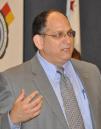Meeting the Challenge: Stanislaus County’s Latino Emergency Council
This blog posting and video are part of a series being produced by CSAC to highlight county best practices through our annual Challenge Awards. These awards recognize the innovative and creative spirit of California county governments as they find new and effective ways of providing programs and services to their citizens. The Challenge Awards provide California’s 58 counties an opportunity to share their best practices with counties around the state and nation. The programs being highlighted are recipients of the 2012 awards.
To review a video about how Stanislaus County is meeting the challenge, click here.
—–
When there’s an emergency, like a flood or a toxic spill, communicating effectively can literally mean the difference between life and death. Knowing how, when and with who to communicate before the emergency happens can be immensely important. By definition, an emergency is unpredictable, except that you can predict that there will eventually be another one. You might not know when the next flood, fire, epidemic or earthquake will strike, but you can prepare for them. However, for immigrants language and cultural barriers can make disaster communication even more difficult.
That is the driving rationale behind the Latino Emergency Council (LEC), a group formed in early 2006 in Stanislaus County to set up an emergency response network linked to the Latino community. Today, the LEC is engaging Stanislaus County’s large Spanish-speaking population on a continuous basis to prepare for emergencies and to respond when they occur.
“We knew we needed to be able to communicate better with our Spanish speakers during the next emergency,” said Stanislaus County Spokesman, David Jones. “We started with that as our focus, but quickly learned there’s a great need to communicate emergency preparedness information to that community as well.” Jones, a founding member, says the LEC is now helping get important information about West Nile virus, flu outbreaks, immunizations and other public health functions out to the Spanish-speaking community.
The partnership includes more than 80 organizations including faith and community based organizations, nonprofits, local businesses, public safety and other government agencies. As the Council has grown, its role in the community has also expanded. “That’s been the best part of the Latino Emergency Council,” said Jones. “By building our preparedness and response capacity for emergencies, we’ve also built up trust, partnerships and a sense of shared community that helps in many different ways. We’re a closer better community now.”
You can follow the group on facebook and learn more by going to www.latinoemergency.com.








































